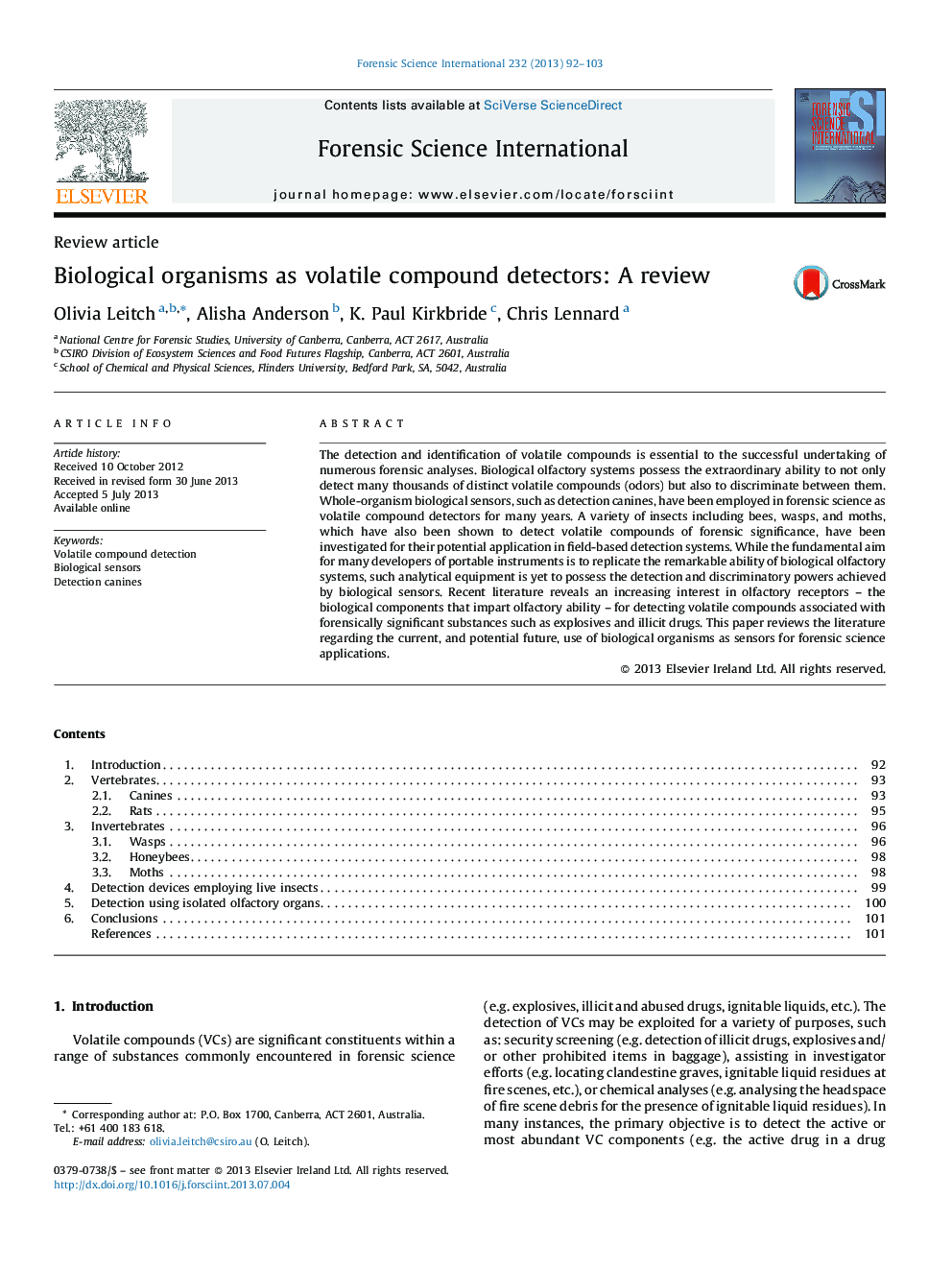| Article ID | Journal | Published Year | Pages | File Type |
|---|---|---|---|---|
| 6552821 | Forensic Science International | 2013 | 12 Pages |
Abstract
The detection and identification of volatile compounds is essential to the successful undertaking of numerous forensic analyses. Biological olfactory systems possess the extraordinary ability to not only detect many thousands of distinct volatile compounds (odors) but also to discriminate between them. Whole-organism biological sensors, such as detection canines, have been employed in forensic science as volatile compound detectors for many years. A variety of insects including bees, wasps, and moths, which have also been shown to detect volatile compounds of forensic significance, have been investigated for their potential application in field-based detection systems. While the fundamental aim for many developers of portable instruments is to replicate the remarkable ability of biological olfactory systems, such analytical equipment is yet to possess the detection and discriminatory powers achieved by biological sensors. Recent literature reveals an increasing interest in olfactory receptors - the biological components that impart olfactory ability - for detecting volatile compounds associated with forensically significant substances such as explosives and illicit drugs. This paper reviews the literature regarding the current, and potential future, use of biological organisms as sensors for forensic science applications.
Keywords
Related Topics
Physical Sciences and Engineering
Chemistry
Analytical Chemistry
Authors
Olivia Leitch, Alisha Anderson, K. Paul Kirkbride, Chris Lennard,
